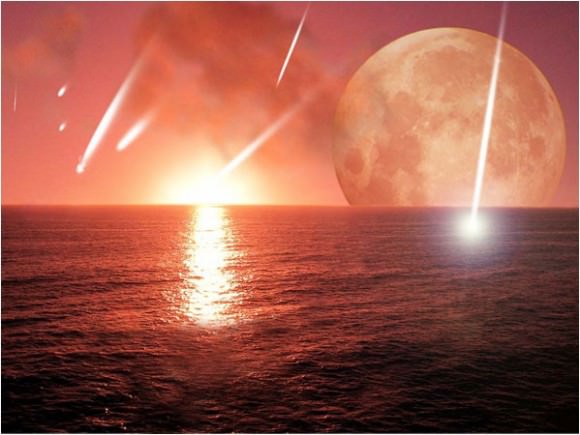METEORS EXPLODE FROM THE INSIDE WHEN THEY REACH THE ATMOSPHERE

Earth is no stranger to meteors. In fact, meteor showers are a regular occurrence, where small objects (meteoroids) enter the Earth’s atmosphere and radiate in the night sky. Since most of these objects are smaller than a grain of sand, they never reach the surface and simply burn up in the atmosphere. But every so often, a meteor of sufficient size will make it through and explode above the surface, where it can cause considerable damage.
A good example of this is the Chelyabinsk meteoroid, which exploded in the skies over Russia in February of 2013. This incident demonstrated just how much damage an air burst meteorite can do and highlighted the need for preparedness. Fortunately, a new study from Purdue University indicates that Earth’s atmosphere is actually a better shield against meteors than we gave it credit for.
Their study, which was conducted with the support of NASA’s Office of Planetary Defense, recently appeared in the scientific journal Meteoritics and Planetary Science – titled “Air Penetration Enhances Fragmentation of Entering Meteoroids“. The study team consisted of Marshall Tabetah and Jay Melosh, a postdoc research associate and a professor with the department of Earth, Atmospheric and Planetary Sciences (EAPS) at Purdue University, respectively.
In the past, researchers have understood that meteoroids often explode before reaching the surface, but they were at a loss when it came to explaining why. For the sake of their study, Tabetah and Melosh used the Chelyabinsk meteoroid as a case study to determine exactly how meteoroids break up when they hit our atmosphere. At the time, the explosion came as quite the a surprise, which was what allowed for such extensive damage.
When it entered the Earth’s atmosphere, the meteoroid created a bright fireball and exploded minutes later, generating the same amount of energy as a small nuclear weapon. The resulting shockwave blasted out windows, injuring almost 1500 people and causing millions of dollars in damages. It also sent fragments hurling towards the surface that were recovered, and some were even used to fashion medals for the 2014 Sochi Winter Games.
But what was also surprising was how much of the meteroid’s debris was recovered after the explosion. While the meteoroid itself weighed over 9000 metric tonnes (10,000 US tons), only about 1800 metric tonnes (2,000 US tons) of debris was ever recovered. This meant that something happened in the upper atmosphere that caused it to lose the majority of its mass.
Looking to solve this, Tabetah and Melosh began considering how high-air pressure in front of a meteor would seep into its pores and cracks, pushing the body of the meteor apart and causing it to explode. As Melosh explained in a Purdue University News press release:
“There’s a big gradient between high-pressure air in front of the meteor and the vacuum of air behind it. If the air can move through the passages in the meteorite, it can easily get inside and blow off pieces.”
To solve the mystery of where the meteoroid’s mass went, Tabetah and Melosh constructed models that characterized the entry process of the Chelyabinsk meteoroid that also took into account its original mass and how it broke up upon entry. They then developed a unique computer code that allowed both solid material from the meteoroid’s body and air to exist in any part of the calculation. As Melosh indicated:
“I’ve been looking for something like this for a while. Most of the computer codes we use for simulating impacts can tolerate multiple materials in a cell, but they average everything together. Different materials in the cell use their individual identity, which is not appropriate for this kind of calculation.”
This new code allowed them to fully simulate the exchange of energy and momentum between the entering meteoroid and the interacting atmospheric air. During the simulations, air that was pushed into the meteoroid was allowed to percolate inside, which lowered the strength of the meteoroid significantly. In essence, air was able to reach the insides of the meteoroid and caused it to explode from the inside out.
This not only solved the mystery of where the Chelyabinsk meteoroid’s missing mass went, it was also consistent with the air burst effect that was observed in 2013. The study also indicates that when it comes to smaller meteroids, Earth’s best defense is its atmosphere. Combined with early warning procedures, which were lacking during the Chelyabinsk meteroid event, injuries can be avoided in the future.
This is certainly good news for people concerned about planetary protection, at least where small meteroids are concerned. Larger ones, however, are not likely to be affected by Earth’s atmosphere. Luckily, NASA and other space agencies make it a point to monitor these regularly so that the public can be alerted well in advance if any stray too close to Earth. They are also busy developing counter-measures in the event of a possible collision.